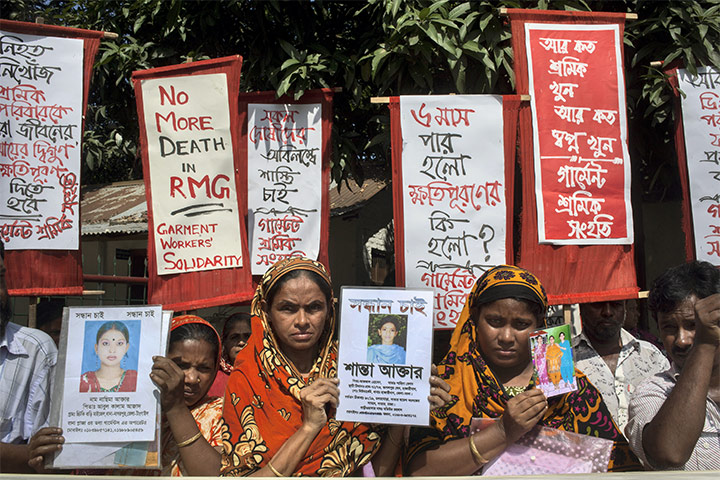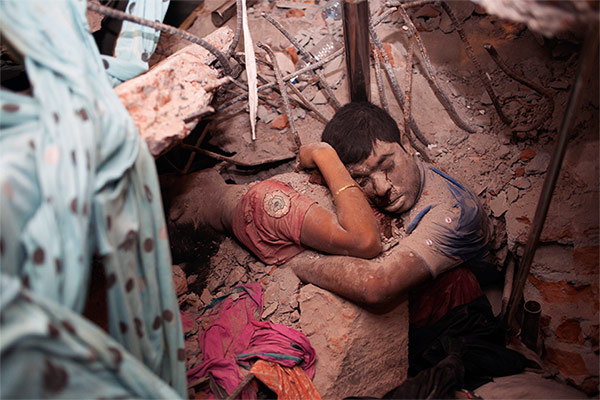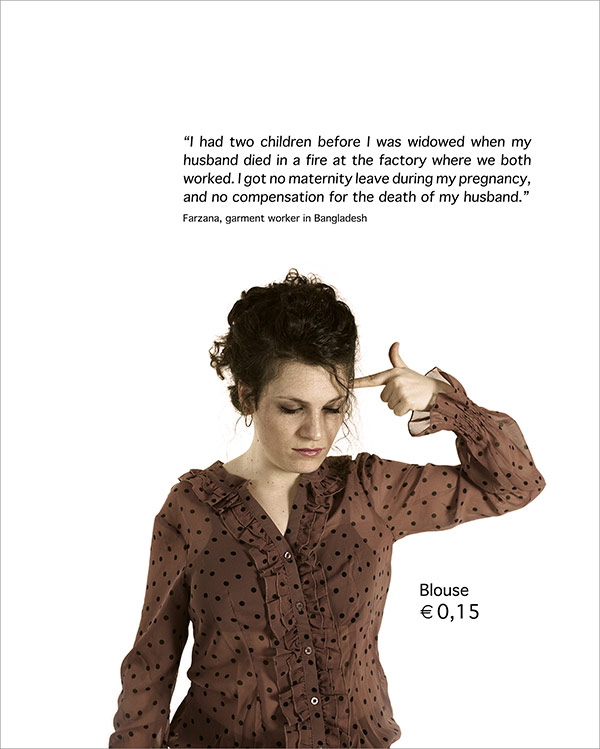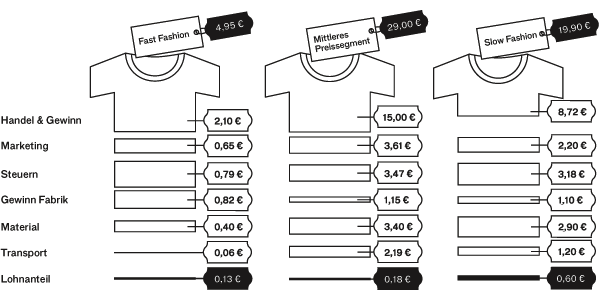
Fashion means business
Just two years ago a textiles factory in Bangladesh collapsed, burying several hundred people under its rubble. 1,127 deaths, 2,438 injuries sustained, some of them serious. It is only this kind of catastrophe that forces people to think about the inhumane working conditions under which a large percentage of our fashion is produced. Sure enough, nine out of ten items of clothing in Germany come from countries with low wages and production costs. According to the German Federal Statistical Office, China leads the field with clothing to the value of €7.87 billion being shipped to Germany in 2013. This was followed by Bangladesh with €3.24 billion and Turkey with €3.1 billion.

A pair of jeans is a good illustration of why manufacturing in emerging nations is so attractive as far as Western corporations are concerned. A pair of jeans can be made in Bangladesh for less than one euro. 80 euro cents of this cover the factory costs (wages and safety measures), 23 euro cents represent the profits. By the time the jeans hit the stores the price has risen by the costs of the materials (around 18%), transport (20%), distribution and store rental (47%). For the labels, the profit margins are huge and the wages paid to the usually young female workforce small. Women between 18 and 25 years of age work up to 16 hours per day, sometimes even more. According to reports by the Clean Cloth Campaign they receive around €35 per month. There is no pay for overtime as demonstrated in research by a journalist, Julian Rohrer, and the WDR broadcasting company.

The textile industry’s dilemma
Even if the large fashion companies have now established codes of conduct for their suppliers, such regulations do not apply to the latter’s subcontractors. It is extremely difficult or even impossible to verify the relevant measures because when there are official checks the workers fail to report any grievances, fearing reprisals and because they are worried about losing their job as recently shown in a WDR report.
At the same time, the sector is faced with a classic dilemma: When textile factories impost the required standards the production costs rise significantly – meaning that companies start looking for new manufacturers that can operate more cheaply. Even now, according to a report in a weekly paper, DIE ZEIT, observers fear that Myanmar could become the new Bangladesh. Already, local unionists and NGOs are reporting about workers being dismissed for one day’s sick leave, about sanitation deficiencies, about inaccessible emergency exits and forced labor. We are familiar with the effects of such circumstances from Bangladesh – hundreds of fatalities.
The price composition of a T-shirt
